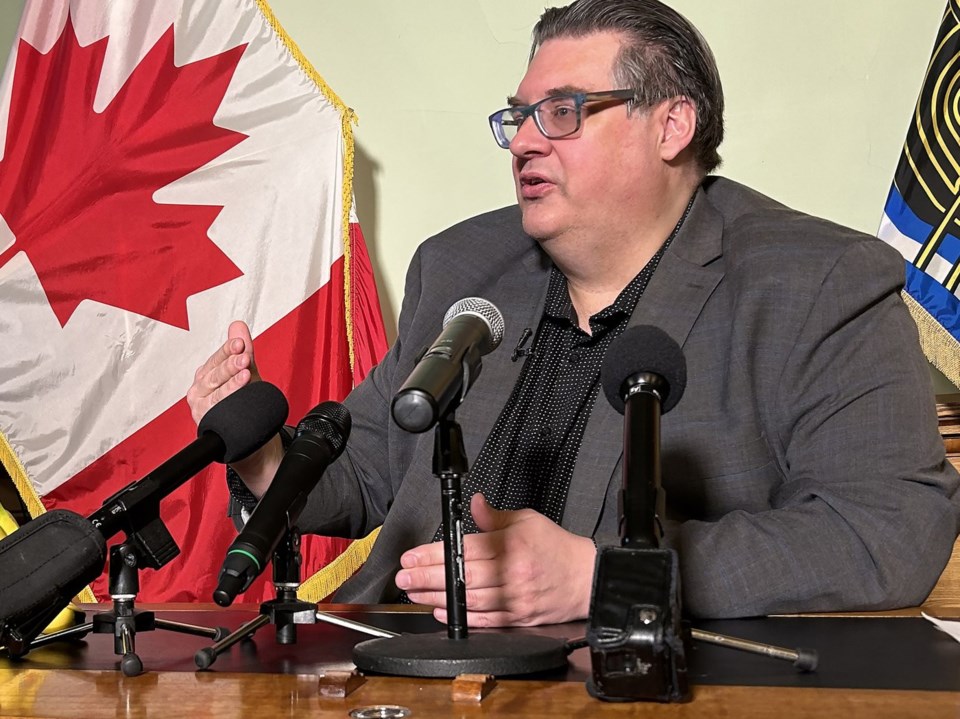FREDERICTON — The practice of teachers putting misbehaving children in small, windowless "seclusion rooms" should be used only as a last resort to ensure safety, New Brunswick’s child and youth advocate says in a report tabled Monday.
The report from Kelly Lamrock raises concerns the seclusion rooms have become an accepted practice — beginning in kindergarten — but there is little data on how frequently they are used and in which schools.
He stopped short of calling for a ban on the practice but called on the legislature to act immediately to legislate better controls.
"Seclusion rooms are used at a moment when most other choices appear to have disappeared and the child, for their own safety, or those around them, needs to be restrained from going around the rest of the school," Lamrock told reporters. But while the Education Department has guidelines, he said there is nothing currently in the law to govern the practice.
His office received about 15 to 20 complaints from parents about their children being put in seclusion rooms, he said, adding that overcrowded classrooms and a shortage of teachers are often to blame.
"I think it is safe to say that for children, it can be quite devastating," Lamrock said. "We've heard people talk about things like loss of trust, a decrease in their willingness to persist in school, distrust of the adults around them. It's a trust breaker."
He said that over the past 20 years, school designs have changed to incorporate seclusion rooms. Guidelines for their use are not being followed consistently, he said, leading to potential violations of the students' human rights.
His recommendations include "immediate legislative amendments" to define the limits for seclusion room use, involvement of clinical experts, parents and disability advocates in all cases of seclusion, and improved reporting on the use of the rooms.
"The Education Department needs to have somebody responsible for reviewing ... and making sure that people's rights are protected if we're going to be locking children in rooms."
Some jurisdictions in Canada and the United States have moved to regulate or ban seclusion rooms, and Lamrock said New Brunswick should legislate to define when their use is acceptable.
"What is more troubling is the lack of clarity on whether the legal authority for these practices exists at all, leaving educators at risk of legal consequences and students subject to arbitrary power," he said in a statement.
Ben McNamara, education director with Inclusion NB, said the report reflects the reality of what his organization has seen in the school system, and he hopes it will lead to a ban of the practice. Inclusion NB works with New Brunswick residents with intellectual disabilities.
Peter Lagacy, president of the New Brunswick Teachers' Association, welcomed the advocate's report, saying the use of seclusion rooms underscores the consequences of decades of government inaction.
"Students are arriving hungry, struggling to manage their emotions and behaviours, and unable to access the critical supports they need in their communities," he said in a statement. "These are systemic issues that teachers cannot solve alone."
Education Minister Claire Johnson said her department needs to look more closely at the report and the practice to determine if children's rights are being violated.
"How are these seclusion rooms being used? How often are they being used? Are they being appropriately used?" she asked. "Is it part of a personalized approach that supports behavioural challenges, or is it, as the advocate suggests, potentially too much and illegal?"
This report by The Canadian Press was first published Dec. 9, 2024.
Hina Alam, The Canadian Press




